Audi A6 Avant e-tron
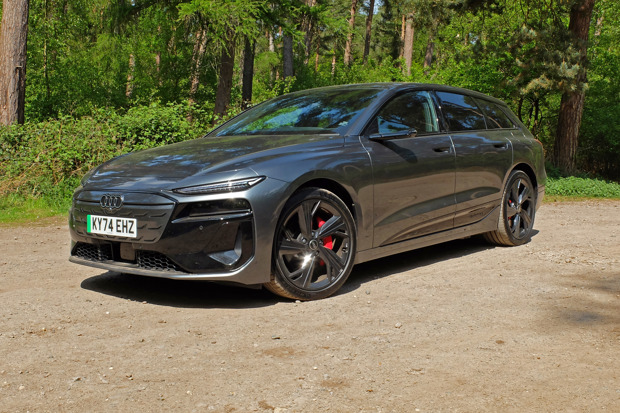
Audi A6 Avant e-tron performance Launch Edition
- Run by: David Ross (since May 2025)
- Price when new: £81,015 (£87,360 with options)
- Power: 367PS (380PS under launch control)
- Torque: 565Nm
- Battery capacity: 100/94.9kWh (nominal/usable)
- Claimed efficiency: 3.7 miles/kWh
- Range: 402 miles
- 0-62mph: 5.4 seconds
- Report 1: Audi's new all-electric A6 estate joins the fleet
- Report 2: Are virtual mirrors the future?
- Report 3: Do noise cancelling EV tyres work?
- Report 4: How EV range has improved over the past five years
- Report 5: We head to Holland in our A6 Avant e-tron
- Report 6: It's goodbye to our Audi A6 Avant e-tron
Report 1: Audi's new all-electric A6 estate joins the fleet
We'll be running the new Audi A6 Avant e-tron - Audi's first electric estate car - for the next four months.
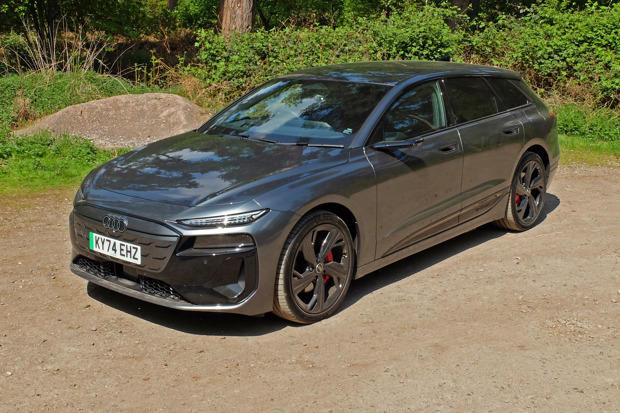
Date: 1 May 2025 | Current mileage: 2636 | Claimed efficiency: 3.7 miles/kWh | Actual efficiency: 3.5 miles/kWh
While the number of EVs on sale has sky rocketed in the last few years, there's been a conspicuous absence of electric estate cars. With SUVs very much flavour of the month, those of us who favour estate cars have had slim pickings to say the least. In fact up until recently there's only been one - the MG 5 - and while there's now the likes of the Peugeot e-308 SW when it comes to bigger family estate cars there's been nothing.
Thankfully that's changing. Last year BMW launched the excellent BMW i5 Touring and hot on its heels, Audi has now introduced the Audi A6 Avant e-tron. This sits alongside the standard petrol and diesel Audi A6 Avant. In 2027 we will also see an electric Mercedes E-Class Estate.
But back to our car. We've gone for an Audi A6 Avant e-tron performance Launch Edition finished in Daytona Grey - traditionally a trademark colour choice for performance Audi models. With options including virtual mirrors, 21-inch black Audi sport alloys and the B&O Premium Sound System, it comes in at £87,360.
That's far from cheap, but then this is a fully loaded launch edition. Go for a standard Sport model and prices start at around £65k. Over the next few months we'll have a chance to find out whether all the extras fitted to our car are worth the money.

So what about range? Well the A6 Avant e-tron line-up is a little confusing when it comes to range as it's dependent on trim. The performance models get a bigger battery than the Sport which means a better range - somewhere between 390 and 408 miles according to official figures. Which goes to show just had much EV range is rapidly improving.
Despite being the performance trim, this isn't the quickest version. Somewhat confusingly there's a quattro variant that has the same battery but is quicker (although with a shorter range as a consequence). Not that our car is exactly slow, with 565Nm of torque and 367PS it will cover 0-62mph in 5.4 seconds. The quattro manages the same in 4.7 seconds - on par with the Volvo EC40 that I previously ran.
First impressions are very positive - I'm already loving the huge boot and the lack of a transmission tunnel in the rear, which is a deal breaker for us with three children under 12. Our three-year old is already a fan of the red brake calipers and the fact that he can sit in the front thanks to Isofix mountings on the passenger seat.
With summer holidays looming, one thing I need to look at is fitting a roofbox. There are no roof bars on our A6 Avant e-tron, plus it has a panoramic roof, so I need to find out whether I can safely fit our Thule Motion 3 roofbox for our trip to Europe in August.
Report 2: Are virtual mirrors the future?
Our A6 Avant e-tron is fitted with Audi's virtual mirrors but are they actually better than traditional mirrors or merely a fancy gimmick?
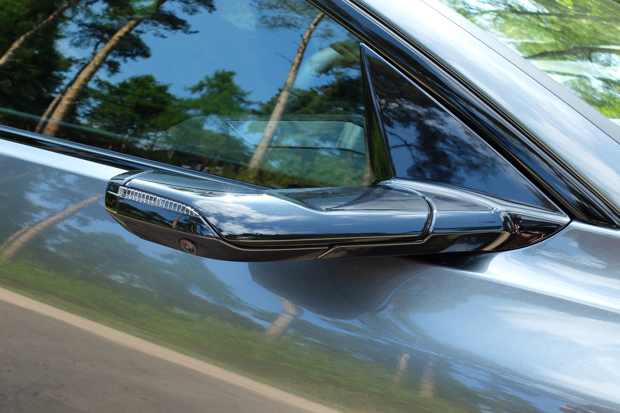
Date: 2 June 2025 | Current mileage: 3722 | Claimed economy: 3.7 miles/kWh | Actual economy: 3.1 miles/kWh
I'm not someone who never embraces change or hates progress, but when it comes to new cars - and new tech - I occassionally have a Jeff Goldbum from Jurassic Park moment. "Just because you could, does it mean you should?"
Of course, if there was no progress, we'd still be happily driving around in Ford Model Ts - but I often feel like we've got to a stage with modern cars where there's very little else to improve. Take door mirrors as a case in point. While modern cars usually have electric and heated mirrors, the basic concept - look in mirror, see behind - hasn't changed since car mirrors become a thing in the 1920s.
But that hasn't stopped technology looking for an alternative solution. Step forward 'virtual' mirrors. First seen on the Lexus ES in 2019, Audi first featured them on the Audi e-tron but they remain a rare feature. In fact you'll likely see them most often on HGVs, where a smaller camera replaces the bulky mirrors required on big trucks.
Fitted as standard to our A6 Avant e-tron Launch Edition, the virtual mirrors have certainly taken some getting used to. I don't have any issues when just driving along, the passenger side one works really well and I've now learnt to just look a little lower on the driver's side rather than out the window.

But when it comes to manouvering, I'm finding it more tricky. I've had 30 years of parking using normal mirrors so my muscle memory usually takes over. I'm not sure if it's the different perspective but I don't have the same confidence for a quick reverse into a parking space. And usually end up on the wonk.
I also find issues when checking my blind spot if I'm joining a busy road at an awkard angle. Usually I'd lean forward for a wider view, but obviously that doesn't work when it's a camera. And while you can adjust the view, there's not as much movement as with a standard mirror.
There are of course benefits. They reduce drag and are quieter than standard mirrors plus they're easy to adjust as you can just move your finger across the screen. The OLED screen also gives better visibility in bad weather.
I like the idea, but in reality I think standard mirrors are just as good and, for most people, probably easier to use. Will they be the future instead of the traditional mirror? I think that's a long way off right now.
Report 3: Do noise cancelling EV tyres work?
Our A6 e-tron is fitted with Michelin Pilot Sport EV tyres but a recent slow puncture highlighted the cons of advanced tyres.
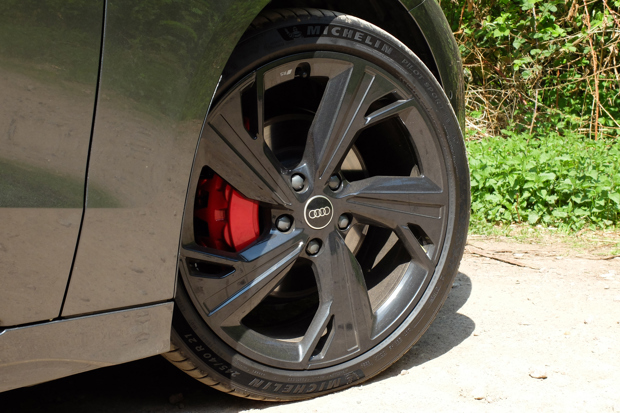
Date: 4 July 2025 | Current mileage: 4780 | Claimed economy: 3.7 miles/kWh | Actual economy: 3.2 miles/kWh
Tyres are tyres right? Well you'd think that but with the advent of EVs, we've seen the innovation of noise cancelling tyres. Because when you don't have the sound of an engine, the next most noticeable thing you hear is the road.
Our Audi A6 e-tron is fitted with Michelin Pilot Sport EV tyres which come with what Michelin calls 'acoustic technology' designed to reduce road noise resonance. In fact it claims they reduce the perceived noise levels by 20%.
Basically, noise cancelling tyres have a layer of foam for sound dampening built into them. The idea being that it will work the same as the sound deadening material found in your car.
Do they work? Having very unscientifically compared the A6 Avant e-tron and our own Audi e-tron - fitted with similar 21-inch wheels but on standard Continental tyres - there's slightly less road noise on the move. But then one is an SUV and the other a newer estate. So who knows...

To be fair, I usually have the accompaniment of three children arguing about what to listen to next on Spotify, so a few decibels less tyre noise won't make much of a difference to me. I'm clearly not the target audience here.
However, there is another side to noise cancelling tyres that I didn't realise. A recent slow puncture on the A6 e-tron meant a trip to the local tyre fitters for - what I hoped - would be a simple repair. As expected, the tyre had a screw in it - right in the middle of the tread. Now usually this would be a straightforward repair costing around £30.
However, as this is a noise cancelling tyre, things are a bit more complicated and repairs aren't as simple due the layer of foam. The long and short was that after much to-ing and fro-ing, a new tyre had to be fitted. And being a Michelin Pilot Sport it cost £330. The price of progress it would seem...
Still, at least with a new tyre on I can drive with the assurance that I don't have to worry about the slow puncture anymore. With lots of long drives coming up over the summer, including a family holiday to Holland in late August, I'm happier with a brand new tyre on.
Report 4: How EV range has improved over the past five years
Alongside the Audi A6 Avant e-tron we run a 2020 Audi e-tron - and the improvement in range thanks to better battery tech is quite remarkable.
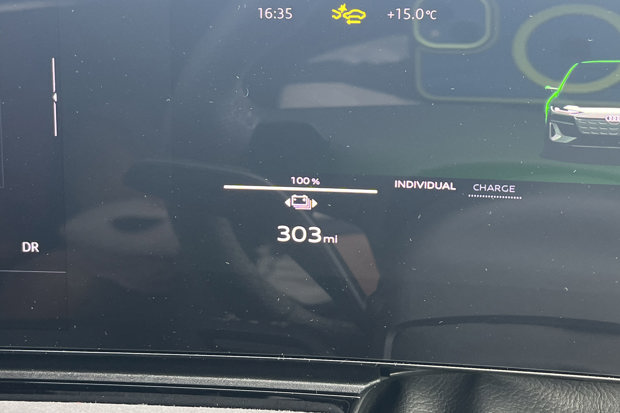
Date: 6 August 2025 | Current mileage: 5469 | Claimed economy: 3.7 miles/kWh | Actual economy: 3.2 miles/kWh
It's fair to say that EV battery tech has advanced dramatically in recent years. As an example, when the Nissan Leaf was launched in 2011 it could manage about 80 miles on a single charge officially. At the time Nissan was very keen to point out that the average daily commute in the UK is about 15 miles. Now the latest Nissan Leaf can cover close to 240 miles.
We still say EVs aren't suitable for everyone - and the charging infrastructure in the UK needs significant improvement - but ranges are quickly improving. With the 2030 ban on the sale of new petrol- and diesel-only cars looming fast, EVs are having to up their game. And the past five years has seen significant improvements.
Audi's e-tron range is a case in point. Alongside the Audi A6 Avant e-tron, we have our own family car, a 2020 Audi e-tron 50 Technik. With its 71 kWh battery it has a range of about 140 miles on a good day (dramatically less in the winter) although a recent software has significantly improved the battery range to 175 miles.
Admittedly, even back in 2020, this wasn't a great range - both the Jaguar I-Pace and Polestar 2 would go further - but that didn't stop the Audi e-tron from being a big seller, even the 50 model. Its effective replacement is the Audi Q6 e-tron - its range? At least 325 miles according to official figures despite not having a much bigger battery at 83kWh battery.
It works for us as we rarely use it for long journeys, the most it does is usually a 100 mile round trip, but if we were doing more, the e-tron would soon become a pain with its limited range.
Meanwhile our A6 Avant e-tron will officially cover 400 miles on a full charge thanks to its 100kWh battery. This makes it far more feasible as a family car that will do everything. We're seeing a range of around 300 miles in the real world, which is a far cry from the 140 miles in the e-tron.
Later this month it will take us over to Holland for a family holiday. Thankfully there are plenty of fast chargers en route through France and Belgium so we'll have no problems recharging the battery. It's not a journey we'd have relished in our e-tron (pre software update at least), especially not with three kids, a full boot and a roofbox on top, which would do economy no favours.
Report 5: We head to Holland in our A6 Avant e-tron
A late summer holiday sees us heading to Holland for a week with our three children. How does the A6 Avant e-tron cope on the 650 mile round trip?
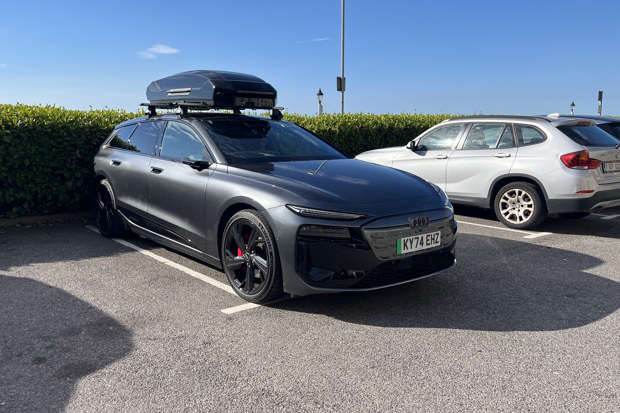
Date: 4 September 2025 | Current mileage: 6705 | Claimed efficiency: 3.7 miles/kWh | Actual efficiency: 3.1 miles/kWh
Growing up, family holidays across Europe by car were a tradition. I remember lots of very early starts and long drives to get to places like Italy, Bavaria and the South of France. Now I have my own family we've kept closer to home when it comes to summer holidays with visits to several different Center Parcs.
But this year we finally decided it was time we did the road trip to Europe holiday. So with the extended family, 13 of us headed over to Holland for a week at Eurocamps near Efteling, a theme park I visited several times growing up.
And we did it in our Audi A6 Avant e-tron. While the charging infrastucture in this country is poor, over in Europe it's far better. A quick search on the Zapmap app shows loads of ultra-rapid chargers en route through France, Belgium and into Holland. So there are no worries about running out of battery.
Of course it's not cheap to charge on a motorway services. After leaving our home in Bedfordshire with 100% charge (and showing 305 miles) and heading to Dover, a quick and enjoyable smooth 90 minute crossing with Irish Ferries later we were into France. Eventually we stopped in Belgium with the range down to about 15%.
We found a decent services with EV Point chargers that charged at about 175kWh so while we had lunch, we left the car to charge to 100% - usually we only go to 80% but as we were on holiday we didn't want to keep stopping to charge. That cost €66 (or about £57) and gave us another 300 miles in the A6. It only took about half an hour to fully charge which was impressive too.

Our efficiency usually hovers around 3.1 miles/kWh but with our Thule Motion 3 roofbox fitted - a must with three children and all their stuff - this dropped to 2.7 miles/kWh, that was at a steady 110kmh with a few bits of traffic along the way.
As you'd expect from an estate Audi, the A6 Avant e-tron was very much at home on the motorway and made for a relaxing journey, even if our three children did their usual trick of arguing in the back. Still, M&Ms seemed to help. Us as well as the children.
One oddity was that the infotainment system developed a fault whereby we had no sound, either from the radio or via Apple CarPlay or Bluetooth. Restarting the system on the move (by holding down the on/off button for 30 seconds) didn't solve it either. It was only after we'd stopped that it righted itself. Strangely it hasn't done it since.
Other things I discovered? You can't change the speedo from mph to kmh while on the move - only when stationary. That took me longer than I care to admit to work out. I could change the EV range to kmh though which made for a slightly confusing part of the drive...
The return journey was a bit busier with traffic. We stopped at the same services to recharge to 80% this time. After spending 90 minutes getting through passport control at Calais we made our ferry by the skin of our teeth, we were in fact one of the last cars to get on. That 80% wasn't quite enough to get us home so a quick stop at Gridserve in Stevenage and a 10 minute top up gave us enough to get home. Plus everyone needed the toilet at that point.
For me, there was no real difference if we'd have gone in a petrol or diesel car. Our stops would have been the same, regardless of whether our car was quickly filled with fuel or left to charge. The real sign of success is that our children loved the holiday (and the journey) and are already excited about France next year.
Report 6: It's goodbye to our Audi A6 Avant e-tron
Our Audi A6 Avant e-tron is leaving is after an enjoyable four months. So what's the final verdict on Audi's first estate EV?
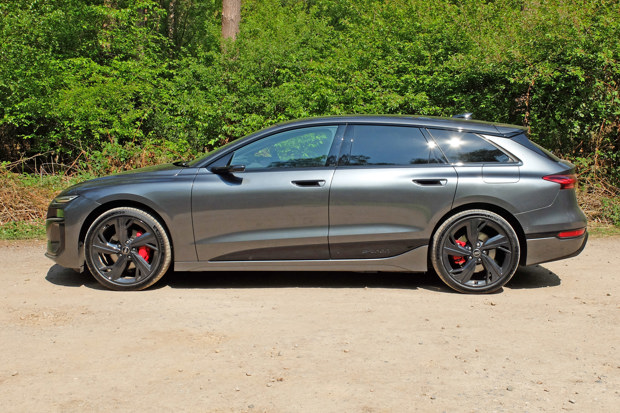
Date: 23 September 2025 | Final mileage: 7377 | Claimed efficiency: 3.7 miles/kWh | Actual efficiency: 3.2 miles/kWh
Our all too brief time with the Audi A6 Avant e-tron has come to end. Over the past four months we've covered almost 5000 miles and it's proved to be mightily impressive.
While the Audi Q4 e-tron left me feeling cold, the A6 Avant e-tron feels more like the excellent Audi e-tron GT when it comes to handling. Yes the ride is on the firm side, this is after all an EV with a big battery that rides on 21-inch wheels with low profile tyres, but it's not uncomfortable. And the trade off is its cornering ability.
It feels reassuringly stuck to the road and traction is phenomenal given the torque this thing has. Yes the quattro four-wheel drive helps, but it's still incredible away from a slow bend.
That's me when I'm driving on my own, but most of the time our A6 Avant e-tron spent its time on family duties, ferrying the kids to school or for days out at weekends. Pretty much normal family life. With three kids in the back the lack of a big transmission tunnel is a godsend as it means whoever sits in the middle actually has some room for their legs.

The range has been decent too. It's not quite up to the claimed 400 miles but we've seen 300 miles plus which is more than enough for us. Compared to our own Audi e-tron which will do about 160 miles on a full charge, the A6 Avant e-tron gives us a lot more flexibility and a lot less worrying about finding a decent charger.
Gripes? The Audi app could be better, it often takes a long time to update and doesn't seem to like to talk to the Ohme app which is frustrating when you're trying to smart charge. We also had a few issues with the infotainment when we couldn't get any sound even after a hard reset. Leaving it for a few hours seemed to solve the problem.
The boot is a good size, which is handy as the frunk is only really big enough for the charging cables. That said we did need the roofbox when we went on holiday for all the children's extra gear. The big issue here was the lack of roof rail which meant having to have those awkward roof bars that sit in the door shuts.
Overall, with its impressive range, strong performance and spacious interior, the Audi A6 Avant e-tron is a great electric estate car in my opinion. While everyone may be buying electric SUVs, for me the estate is still a great choice, as the Audi A6 Avant e-tron illustrates.
